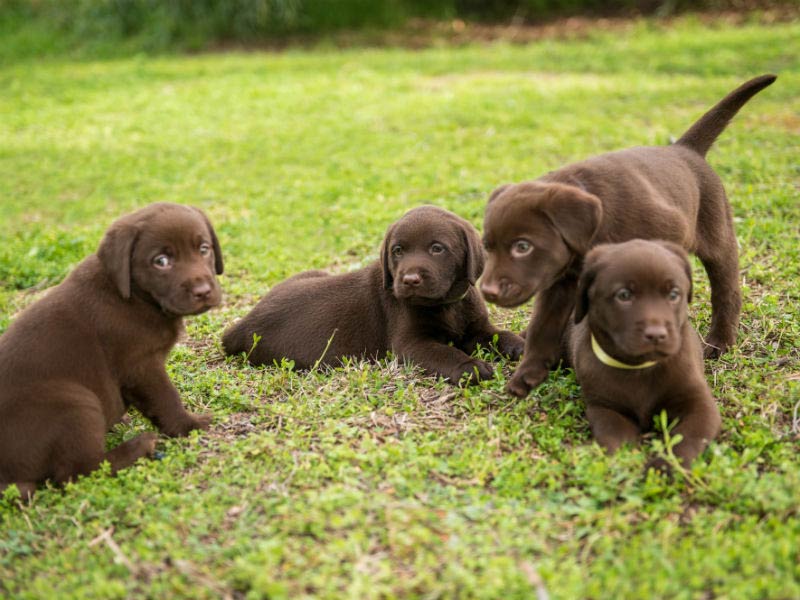A few short weeks ago, it felt like you had all the time in the world with your new litter, but now it’s nearly time for your puppies to go home with their forever families.
The 6-to-8-week period is especially critical for meeting as many people as possible and experiencing as many stimuli as possible. The puppies need to meet as many different adults and children as you can manage. Don’t forget about meeting other species, too. If they can be exposed to friendly cats (but not allowed to chase them) and see animals like horses, sheep, and goats, even better. After 8 weeks, fears begin to show up, so this foundation of good socialization will pay off.
Continue introducing new noises and objects — things with wheels (gently roll a skateboard near them, for example) and boxes for them to play in. Take them for short rides in the car, using a crate.
The puppies should be taken outdoors in your own clean yard to get used to the feel of grass, both wet and dry. Put an inch or two (depending on the size of puppies) of water into a low pool or pan and let them play in that. You can also fill cookie sheets with water and toys and let them investigate.
Continue brushing and handling, especially of feet and toes. Look at mouths and teeth every day. It doesn’t need to be a thorough examination, just make being looked at a positive experience by being cheerful and rewarding with high-value treats and play.
The puppies’ individual personalities are clearer. They probably love to play rough with each other and sound ferocious sometimes! This play is good, but don’t let anyone bully or be bullied. Separate the puppies based on their personalities. The less assertive pups will develop confidence playing together, and the more assertive ones will benefit because they won’t get the chance to be bullies.

Start crate training. Keep an open crate or two in the puppies’ play area. When they are tired and have pottied, give them each a treat or chew toy and have them nap, individually, in a crate. Start feeding them individually in their crates. If you don’t have enough crates for all the puppies, you can alternate: feeding some pups in crates at breakfast, some at lunchtime, and some at suppertime.
Practice standing the puppies on a table. Put a large cookie pan on it, so they will be used to the feel of cold metal under their feet. This will help them when it’s time to go to the vet or groomer. Make it a happy experience by offering them tasty treats while on the table.
Under supervision, let the puppies wear a collar and leash, just dragging the leash around while you play with them and give treats. This is a good start in helping future owners train them to walk on a leash.
Think about which puppies should go with which new owners. If you have learned about each buyer’s lifestyle and personality, you’ll be able to make good matches. Ensure that the buyers know how to continue with socialization and training, and let them know you will always be available if they have questions.
It’s bittersweet when puppies leave for their new homes, but wonderful hearing about how well they are doing, and you know it’s largely due to your own careful and loving preparation. The new owners may not realize how important your hard work was, but they will appreciate how their well-adjusted puppy fits in wonderfully with their family.


